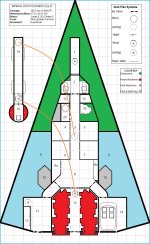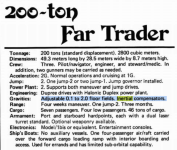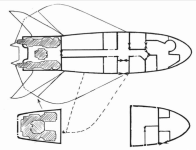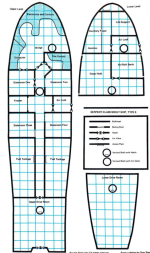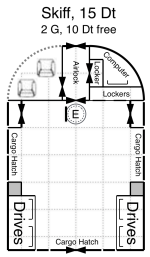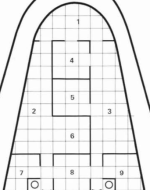Spinward Flow
SOC-14 5K
The smarter play would be to simply "add" the 3 ton cargo hold to the air/raft berth, so you have a 7 ton space there (with the air/raft occupying 4 of the 7 tons).But maybe on this version a larger hatch might not be a bad idea.

